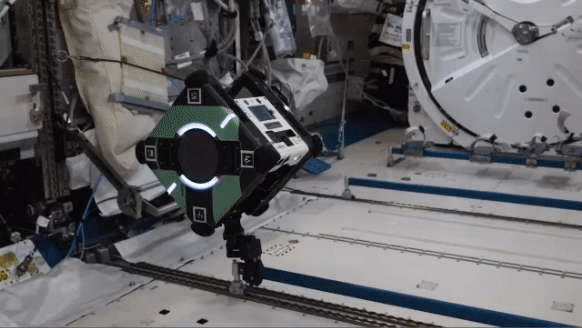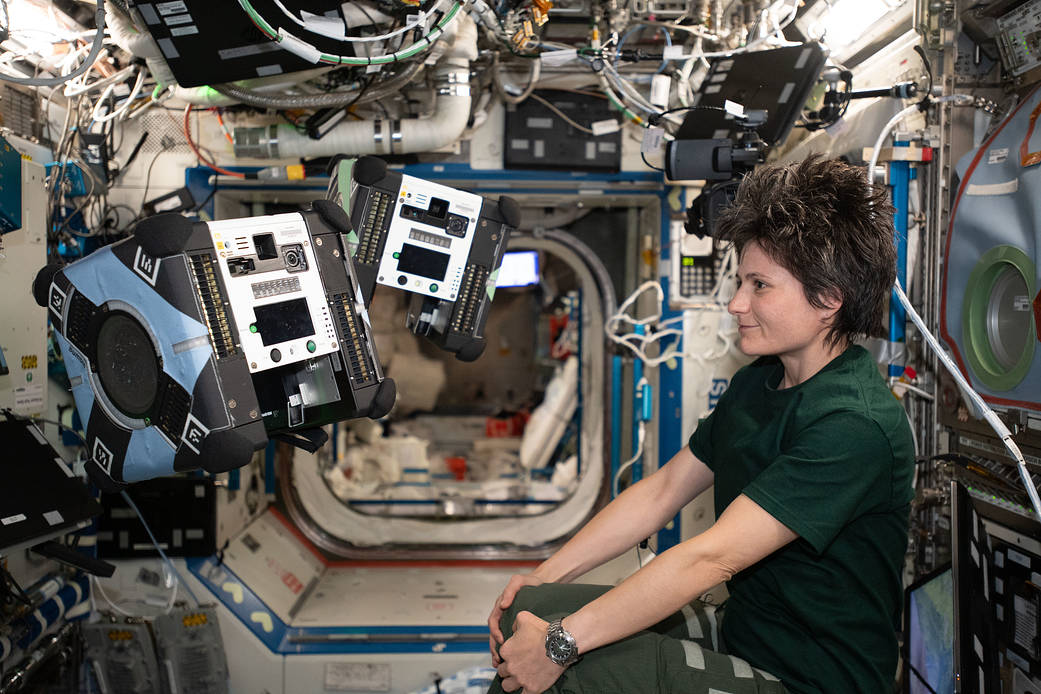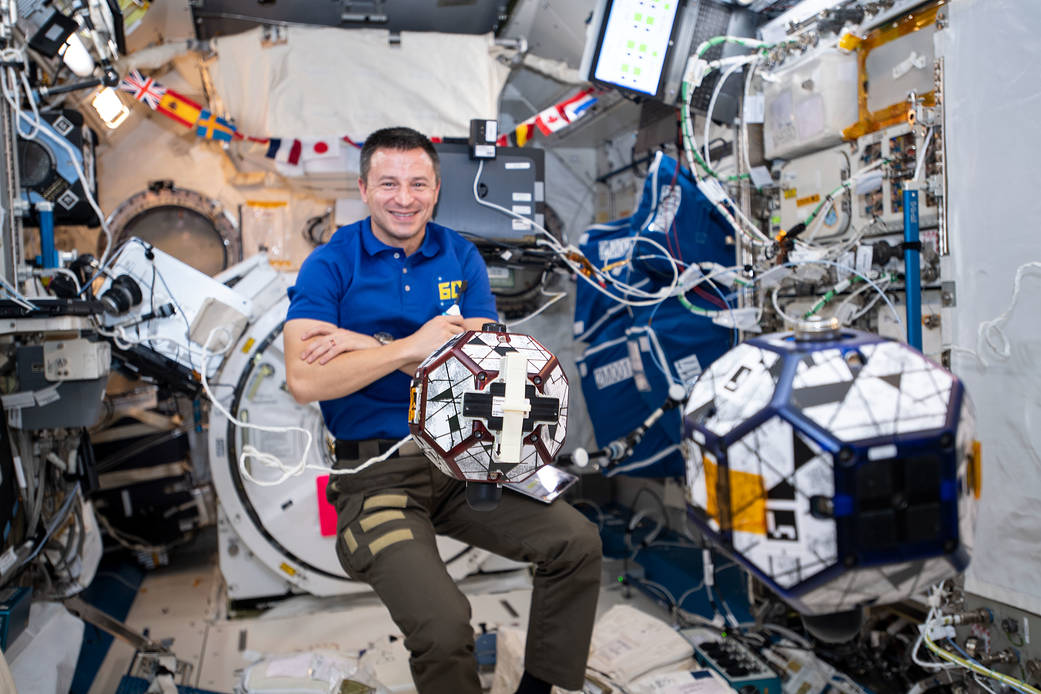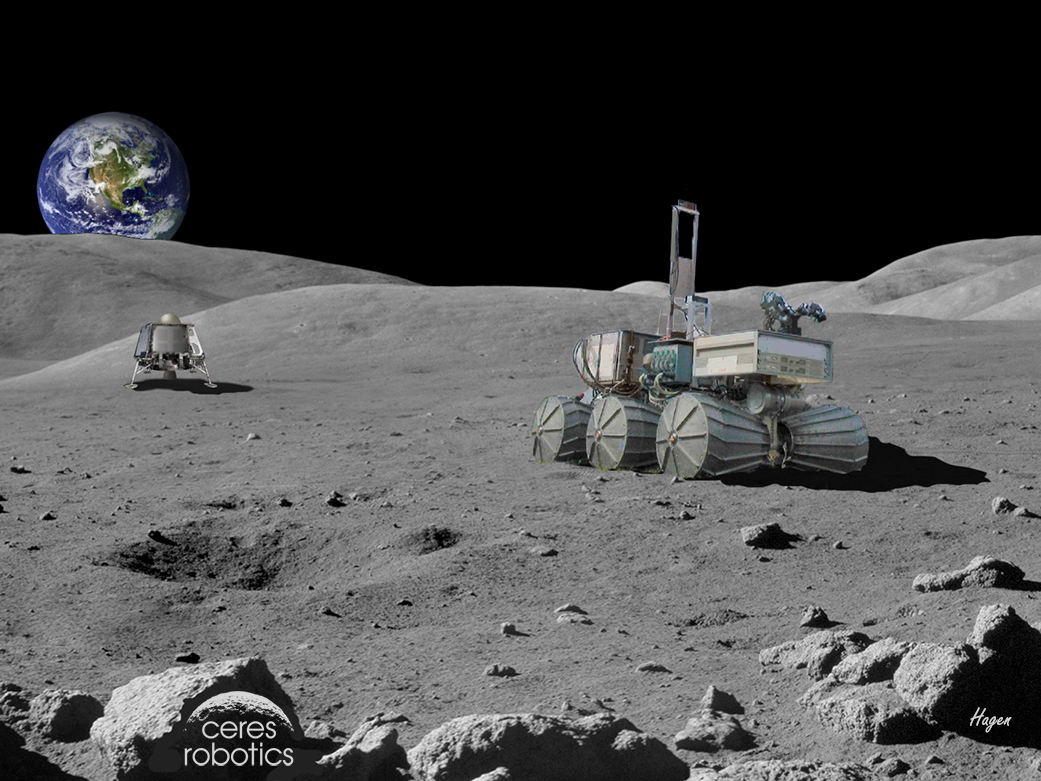Crew time is a valuable resource on the International Space Station and its value only increases for future space missions. One way to make the most of crew time is using robotic technology either to assist crew members with various tasks and or to completely automate others.
A current investigation on the space station, JEM Internal Ball Camera 2, is part of ongoing efforts to develop this technology. The free floating remote-controlled panoramic camera first launched to the space station in 2017 and this investigation from JAXA (Japan Aerospace Exploration Agency) demonstrates using the camera to autonomously capture video and photos of research activities. Currently, crew members are assigned time to take video and photos of scientific activities, which are important tools for researchers. Successful demonstration of the autonomous capture technology ultimately could free up that crew time. The investigation also serves as a test platform for other tasks robots might perform.
Three free-flying robots on the space station, known as Astrobees, support multiple demonstrations of technology for various types of robotic assistance on space exploration missions and on Earth. Results from these investigations are contributing to improvements in robotic technology and its potential.
The SoundSee Mission demonstrates using sound to monitor equipment on a spacecraft, with a sensor mounted on an Astrobee. The sensor detects anomalies in the sounds made by life support systems, exercise equipment, and other infrastructure. Sound anomalies can indicate potential malfunctions. Preliminary results from this investigation highlighted the difference between simulations and in-space experiments and noted that small changes in a simulated environment can approximate differences in expected and observed values in the target environment1. The investigation also helps characterize sound sources in the constantly changing acoustic landscape of the space station, which can inform future use of this technology.
Designing robots to traverse the surface of the Moon or Mars presents specific challenges. The landscape may be rough and uneven, requiring a robot to make time-consuming detours, and thick regolith or dust can bog down a robot and burn up a lot of fuel. One possible solution is for robots to hop over such landscapes. The Astrobatics investigation uses the Astrobees to demonstrate propulsion via a hopping or self-toss maneuver using arm-like manipulators. This approach could expand the capabilities of robotic vehicles for tasks such as assisting crews on intra- or extravehicular activities, servicing equipment, removing orbital debris, conducting on-orbit assembly, and exploring. Results show that self-toss maneuvers have a greater range of motion and provide a greater displacement from a start position2.
The Gecko-Inspired Adhesive Grasping investigation tested an adhesive for robotic grasping and manipulation using a special gripper on an Astrobee. Geckos are a type of lizard that can grasp a smooth surface without needing features such as nicks and knobs to hold on to. Adhesive grippers inspired by these reptiles, already proven to work in space, could allow robots to rapidly attach to and detach from surfaces, even on objects that are moving or spinning. Researchers report that the adhesives functioned as anticipated and suggested some considerations for their future use, including launching redundant adhesive tiles and ensuring complete adhesive contact in microgravity3. In addition, on robots used for intravehicular activities or spacewalks, the gecko grippers should be able to absorb kinetic energy and accommodate misalignment. The grippers also need sensors to determine when all the tiles are in contact with the surface so tension can be applied at the right moment.
Space debris includes satellites that could be repaired or taken out of orbit. Many of these objects are tumbling, which makes rendezvous and docking with them a challenge. The ROAM investigation used Astrobees to demonstrate a technology to observe how a target tumbles and to use this information to plan ways to safely reach them. Simulation results validated the accuracy of the method prior to the experiment4.
A previous robotic technology, SPHERES, used bowling-ball sized spherical satellites to test formation flying and algorithms for control of multiple spacecraft as well as to host physical and material science investigations. One of those investigations tested autonomous rendezvous and docking maneuvers. The technology was able to handle increasingly complex scenarios that added static and moving obstacles5.
The design of an earlier robot tested on the space station, Robonaut, resembled a human. It had a torso, arms with human-like hands, a head, and legs with end effectors that allowed it to move around inside the space station. While on the station, Robonaut flipped switches, removed dust covers, and cleaned handrails6.
The ISAAC investigation combined Robonaut and the Astrobees to demonstrate a technology to track the health of exploration vehicles, transfer and unpack cargo, and respond to issues such as leaks and fires. A second phase of testing aboard the station focuses on managing multiple robots as they transport cargo between an uncrewed space station and visiting cargo craft. In the third and final phase of testing, the team will create more difficult fault scenarios for the robots and develop robust techniques to respond to anomalies.
These and other robotics investigations contribute to the success of future missions, where robots could help crew members with a variety of tasks, freeing up their time and reducing the risks of working outside spacecraft and habitats. Robotic assistants have important applications in harsh and dangerous environments on Earth as well.
Search this database of scientific experiments to learn more about those mentioned above.
Citations:
1 Bondi L, Chuang G, Ick C, Dave A, Shelton C, Coltin B, Smith T, Das S. Acoustic imaging aboard the International Space Station (ISS): Challenges and preliminary results. ICASSP 2022 – 2022 IEEE International Conference on Acoustics, Speech and Signal Processing, Singapore, Singapore. 2022 May; 5108-5112. (https://ieeexplore.ieee.org/document/9746256)
2 Kwok Choon ST, Romano M, Hudson J. Orbital hopping maneuvers with Astrobee on-board the International Space Station. Acta Astronautica. 2023 June; 20762-76 (https://www.sciencedirect.com/science/article/pii/S0094576523000991?via%3Dihub)
3 Chen TG, Cauligi A, Suresh SA, Pavone M, Cutkosky MR. Testing gecko-inspired adhesives with Astrobee aboard the International Space Station: Readying the technology for space. IEEE Robotics and Automation Magazine. 2022 May 27; 2-11 (https://ieeexplore.ieee.org/document/9783137)
4 Oestreich CE, Espinoza AT, Todd J, Albee KE, Linares R. On-orbit inspection of an unknown, tumbling target using NASA’s Astrobee robotic free-flyers. IEEE/CVF Conference on Computer Vision and Pattern Recognition (CVPR) Workshops, 2021, Virtual Event. 2021 June 19-25; 2039–2047 (https://www.nasa.gov/mission/station/research-explorer/investigation/?#id=8324)
5 Chamitoff GE, Saenz-Otero A, Katz JG, Ulrich S, Morrell BJ, Gibbens PW. Real-time maneuver optimization of space-based robots in a dynamic environment: Theory and on-orbit experiments. Acta Astronautica. 2018 January 1; 142170-183 (https://www.sciencedirect.com/science/article/pii/S0094576516300431?via%3Dihub)
6 Diftler MA, Ahlstrom TD, Ambrose RO, Radford NA, Joyce CA, De La Pena N, Parsons AH, Noblitt AL. Robonaut 2 – Initial Activities On-Board the ISS. 2012 IEEE Aerospace Conference, Big Sky, MT. 2012 pp.1-12. (https://ieeexplore.ieee.org/document/6187268)

































